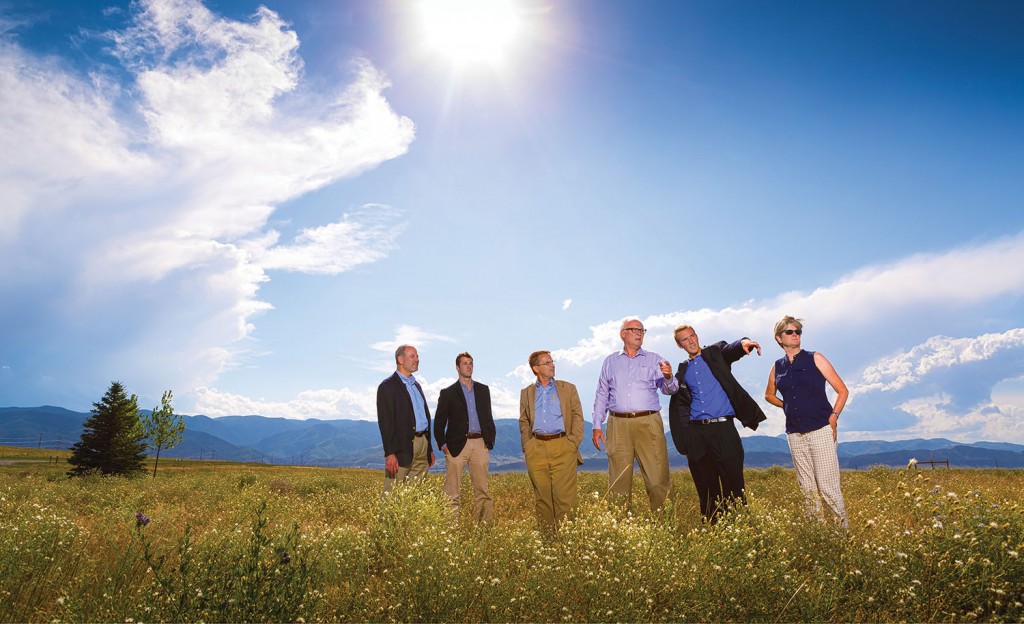Vanderbilt researchers helping to build a futuristic, sustainable city
Read the Vanderbilt Magazine story here.

Bouncing along a red-dirt road peppered with a few terrifying embankments, a Vanderbilt delegation arrives at an empty hilltop meadow carpeted with prairie grass and cordoned off by a barbed-wire fence. Other than a few bored cows, the only cue indicating the destination is a lone sign reading “Sterling Ranch: Where Quality of Life Begins.”
Situated 20 miles southwest of Denver, and nestled between two state parks that offer stunning views of the Rocky Mountains, Sterling Ranch doesn’t look like much now. But during the next 20 years, the five-square-mile, $4.3 billion planned community will take shape as a futuristic city. Houses will leave smaller ecological footprints and will be outfitted with smart water and energy-management systems. Local schools will offer the latest advances in curriculum and classroom design. And in the end, Vanderbilt students and faculty will have helped design and implement all of it.
At least that’s the vision of Brock Smethills, BE’13, and his father, Harold Smethills, a former Coors executive who is now chairman of the Sterling Ranch Development Co. It’s also the reason why Philippe Fauchet, dean of Vanderbilt’s School of Engineering, along with faculty members David Kosson, the Cornelius Vanderbilt Professor of Engineering, and Claire Smrekar, associate professor of leadership, policy and organizations at Peabody College, found themselves exploring a bare patch of land in suburban Denver and attending several days’ worth of intense meetings during the summer.
“This is a singular opportunity,” Kosson says, adding that he and his Vanderbilt colleagues know of no other schools that have done something like this. “A place for research that’s of this magnitude and this cutting edge is completely in line with Vanderbilt’s ideals of immersion learning and vertical integration.”
One set of Vanderbilt-led projects will include creating the next generation of cyber-physical systems that integrate software to monitor and manage water quality and usage. Another set of projects will explore a flexible energy grid that can transition seamlessly from rooftop solar power to other electricity sources without causing blackouts. Undergraduates will work on a model sustainable home to be used as a prototype for the homebuilders who have been approved to work in Sterling Ranch. Once it’s built, the house will then serve as a learning lab on the property.
Read the full story here.

Leave a Response